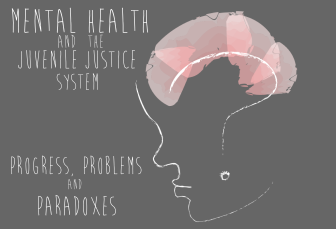 Dante was diagnosed with bipolar disorder. Aim Higher, Inc., an organization that provides disability services, hastily assessed Dante with a standard questionnaire, asking him vague questions such as, “Does he/she display aggressive behaviors?” From his answers, a list of possible diagnoses was computed. From the list of possibilities, it was then decided by a licensed doctor that Dante was bipolar — just like that.
Dante was diagnosed with bipolar disorder. Aim Higher, Inc., an organization that provides disability services, hastily assessed Dante with a standard questionnaire, asking him vague questions such as, “Does he/she display aggressive behaviors?” From his answers, a list of possible diagnoses was computed. From the list of possibilities, it was then decided by a licensed doctor that Dante was bipolar — just like that.
Upon receiving Dante’s case, counselors at the Center on Juvenile and Criminal Justice determined his bipolar diagnosis to be inaccurate. Staff found that he was not actually bipolar — but that he was acting out as a result of traumatic experiences in his life.
Dante’s story is similar to that of many young people in the justice system. Many are deemed to have mental disabilities as a result of inadequate screening and the lack of responsive programming. Bipolar disorder diagnoses in particular have increased by 40 times among all youth, outpacing diagnoses among adults, in the last 10 years.
According to the National Alliance on Mental Illness, an alarming 70 percent of justice-involved youth now currently have one or more psychiatric disorders. Of that 70 percent, at least 20 percent have a serious mental illness. Does the increase in kids and teens diagnosed with mental and behavioral issues mean there are more mentally ill, “deviant” youth in the United States? Absolutely not.
[module type=”aside” align=”right”] Learn more about mental health on JJIE.org’s Juvenile Justice Resource Hub.
Learn more about mental health on JJIE.org’s Juvenile Justice Resource Hub.
Youth who display behaviors of sadness, anger and emotional distress — normal responses to trauma that most justice-involved youth have experienced — are incorrectly diagnosed and then prescribed psychotropic drugs instead of trauma-focused treatment. Failing to identify the needs of young people does not address the underlying cause of delinquent behavior, and therefore is ineffective treatment that promotes recidivism.
One explanation for chronic misdiagnoses may be the lack of adequate screening. Illinois, Texas, Pennsylvania and Nevada screen all youth in custody and hold detention hearings to address individual mental health and substance abuse problems. Screening prior to adjudication may route youth to proper treatment resources rather than trap them in the punitive justice system. However, nationally, the majority of screenings unfortunately occur after the fact.
[Related: Schools Remove Barriers to Mental Health Treatment]
Youth diagnosed with mental health needs are also overmedicated. Young people with less severe or no actual impairments receiving mental health treatment increased from 2.74 million per year in 1996 to 4.19 million in 2012. According to a study by Medco Health Solutions, between 2001 and 2005 the number of all youth age 19 and younger taking antipsychotic medications rose by 73 percent.
There is no national data, only two surveys in Pennsylvania and Oregon on the rates of psychotropic drug usage in juvenile detention facilities. In small detention facilities in Pennsylvania, the annual rate of youth taking psychotropic medications rose from 40 to 50 percent. Seventy-two percent of females and 54 percent of males were medicated in Oregon facilities in 2002. Qualified professionals often train facility staff to interact and treat youth, rather than interacting with the youth themselves. Because professional psychiatrists are not always available on a daily basis, less than half of all justice-involved youth receive direct treatment. Without psychotropic drug usage responsibly monitored, it is unsure if those taking such drugs truly need them.
Every young person who has braved a life of trauma deserves the proper resources for treatment, not Band-Aids to cover the problems, so that they may return to their communities as productive citizens, thereby improving long-term public safety.
All states must adapt detailed and individualized screening processes that can accurately assess underlying mental trauma of youth who commit offenses. Rehabilitation programs for youth must address trauma, be gender-specific and include research on the safety and effectiveness of psychotropic medicines for treating youth.
The intention of the juvenile justice system is to allow young people to return to their communities. For this goal to be achieved, the people in the juvenile system — judges, probation staff, correctional staff and attorneys on both sides — must seek to address underlying trauma by actively collaborating in favor of youth enrollment in mental health evaluations, community-based mental health resources and educational programs.
Lauren Barretto is a recent graduate of San Francisco State University and a current member of the policy team at the Center on Juvenile and Criminal Justice.
More articles related to this one:
Recognizing Mental Illness In Youth
In New Orleans, School and Health Care Decentralization Affect Neediest Children
Sandy Hook One Year on, the Nation Struggles With the Stigma of Mental Illness


























